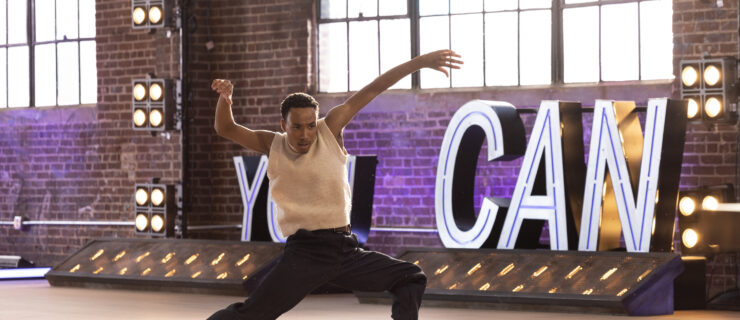Partnering for Newbies
You’re at a summer intensive, taking your first pas de deux class—ever. Your palms sweat as you grasp your partner’s hand for a shaky promenade, staring intently at the floor to avoid looking him in the face. “Sorry!” you chirp nervously when you fall off pointe, feeling your face grow hot when he doesn’t say anything. “Ugh!” you think. “Why is this so awkward?”
Partnering class can be intimidating at first. Guys are touching you, lifting you and whipping you around. You have to smile and sometimes even act like you’re in love, though you may not know or like each other. Pretty much everyone suffers from partnering anxiety, but if you know what to expect and keep an open mind, you can work through it and have a blast.
How to Prepare
Your partner needs access to your torso without any obstructions, so keep things basic with a leotard and tights. (And make sure your leo has good bottom and chest coverage—things tend to ride up and shift during lifts!) Some teachers won’t allow you to wear a skirt during partnering class, but there’s good reason: “The guys’ hands can get caught in the bow,” says Pittsburgh Ballet Theatre principal Julia Erickson. “If you’re permitted to wear one, tuck in the ribbons.”
When a partner is supporting you, you can stay on pointe for long stretches of time—and in pas de deux class, you will, which can totally kill your pointe shoes. Put on a newer, harder pair to help you maintain your balance and prevent overstretching the top of your foot.
You’ll be in close physical contact with your partner, so you might want to swipe on some extra deodorant and sneak a quick mint to combat any dragon breath. “Don’t go crazy with the perfume,” says Erickson, “but wear a clean leo and have good hygiene.”
In-Class Basics
Don’t worry about the nightmare scenario of being the “last girl picked”: Most of the time, your partner will be selected for you. “We usually put dancers together according to height and body type,” says Houston Ballet Academy teacher Andrew Murphy. Sometimes you may have to share your partner if the male/female ratio is uneven.
Beginning pas de deux classes focus on simple movements. You might start with a basic weight transfer exercise where your partner shifts you forward, back and side to side on pointe. Later, you’ll practice promenades in various positions, pirouettes from fourth and finger turns. “I don’t have students do big lifts right away,” Murphy says. To avoid possible injury (and embarrassment), he’ll modify a more complicated lift and work on it over the summer as the boys get stronger.
Partnering involves intricate coordination—you have to jump at the exact moment the boy lifts for maximum effect (and minimal strain on his lower back). But a good partnership also means letting go. “You have to trust him,” Erickson says. “Don’t try to partner yourself. Hold your center, but give him your weight and be malleable so he can shape you into positions.”
Working Through the Weirdness
Partnering definitely has its awkward moments. “I remember having a huge crush on my first partner,” says Washington Ballet principal Elizabeth Gaither. “I wasn’t used to boys touching me. I was completely mortified! Our instructor would say, ‘Look him in the eyes,’ and I just couldn’t.”
Touching your partner is a huge part of the learning process, but your teacher will help you get used it. “I teach them how and where to put their hands,” Murphy says. “They get more comfortable as time goes on.” Once you get a little more involved in the class, “you won’t even notice where his hand is or what’s happening,” Gaither says.
However, with all this close-range dancing, someone’s bound to get whacked. “I elbowed my partner in the nose once during a pirouette and almost broke it,” Gaither says. “He was bleeding all over!” You’ll need to figure out how much space to keep between each other to avoid collisions, and adjust to physical differences like height or arm length with each partner. But remember that even the pros occasionally knee or slap their partners accidentally. If it happens, apologize, but don’t beat yourself up about it.
What if your personalities clash? “Stay calm and don’t let frustration get to a boiling point,” Gaither says. “Ask him what he needs and what you can do to help. Keep communication going.” And if that doesn’t work? “Be honest and say, ‘I’d like to learn as much as possible. Please help me so we can both benefit,’ ” Erickson says.
You may feel self-conscious about working with a boy for the first time, but try to keep an open mind and a sense of humor. “We think that we’re the only awkward ones, but everyone’s in the same boat,” Erickson says. “Remember, you’re there for each others’ mutual benefit.” Learning how to partner is an exciting stepping stone in your dance career—let go, have fun and enjoy the ride!



